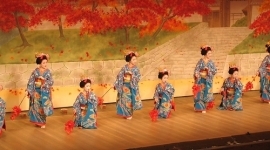History of Shiatsu
“Shiatsu is like a mother hugging her child” (Shizuto Masunaga)
Origins of Shiatsu
Although Shiatsu is a typically Japanese technique, its roots must be sought in ancient Chinese medicine. The oldest text found, “The Classic of the Yellow Emperor”, dates back to the Han dynasty (206 BC) and considers medicine and philosophy as a single entity. Around the 6th century AD, Chinese monks brought a combination of Buddhism, Taoism, and Confucianism to Japan; trade routes were opened and, in the 7th century, a delegation of Japanese students was sent to China to study traditional Chinese culture and medicine.
When the warlords became the masters of Japan, martial arts took on particular importance among the people: thus Jujitsu was born, a self-defense technique based on the pressure of certain points applied on the enemy’s body.
From this self-defense technique, around 1600, a form of massage developed, called Anma, practiced mainly by blind people who, due to their condition, did not possess medical knowledge of the same level as doctors. It was around the 20th century that Shiatsu developed. The founder of this technique was Tamai Tempaku, who during the occupation by the United States (1945), a directive was issued banning all traditional therapies; In order to legitimize their technique, practitioners had to submit to the “rule” of adapting their work to Western medicine.
This partly caused the traditional characteristics of the therapy to be lost and this is precisely why today, in the world, there are so many different styles united under the name of Shiatsu.
Fundamental to Shiatsu was the contribution that three practitioners brought during the 20th century:
Tokujiro Namikoshi
Shizuto Masunaga
Katsusuke Serizawa
Shizuto Masunaga
Shizuto Masunaga, born in 1925 in Hiroshima Prefecture (Japan), was the founder and president of the Iokai Shiatsu center in Tokyo. Graduated in psychology from Kyoto University and subsequently teacher at the same university, he was influenced by his mother who had studied Shiatsu with Master Tempaku and graduated from Tori Namikoshi’s school, where he remained as a teacher for about ten years. Towards the end of the 20th century, Shizuto Masunaga brought Shiatsu back to its origins, developing his own personal style called Zen Shiatsu which integrated the studies of traditional Chinese and Japanese medicine with the knowledge of Western physiology. This system considers the recipient as a whole: through the meridians, a system of Ki flow channels, the operator acts on the patient’s mind, spirit, emotions and body.
This system reflects the simplicity and spiritual approach of Japanese Buddhist monks.
Zen Shiatsu introduces a diagnostic system known as Kyo/Jitsu which examines the energy present in the meridians, both in deficiency (Kyo) and in excess (Jitsu) and a new series of exercises, Makko-Ho, specifically designed to help the flow of Ki flow within the meridians.
Masunaga also developed a form of abdominal diagnosis known as Hara Diagnosis and extended the traditional meridian path used in acupuncture to include additional paths.
After his death in 1981, his students began teaching and spreading Zen Shiatsu; in particular Wataru Ohashi, Masunaga’s collaborator, contributed to the development and diffusion of this style in America, personalizing it according to his own needs.
Masunaga is a style of Shiatsu that stimulates study and personal development; his theories are now widespread in the USA and Europe.

